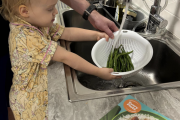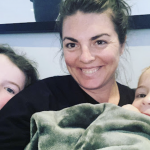The 5 ‘Visitors’ You Don’t Want Your Child to Bring Home from School (including Threadworm)

The 5 ‘Visitors’ You Don’t Want Your Child to Bring Home from School
Sponsored post
Mention the words ‘parasitic infection’ and many of us will automatically think of undeveloped third word countries, but the truth is, parasites are very common amongst young children right here in Australia. Children tend to play in closer proximity to one another, and often aren’t as concerned with good hygiene as adults might be, allowing infection to spread to their peers.
As gross as they may sound, the good news is that there are treatments for getting rid of the parasites that would like to call your child’s body home.
Scabies
Scabies is a skin disease caused by a tiny animal called a mite. The female mite burrows into the skin, especially around the backs of the knees, elbows, armpit and groin, and lays eggs (which caused irritation and itching).
Treatment: Your Doctor can prescribe you a specially medicated lotion to get rid of the mites.
Threadworm
Threadworms are tiny thread-like shaped worms that live in the intestines. The are one of the human worms that we can get. They are highly contagious and easily passed on to others through hand-to-hand and hand-to-mouth contact. The female threadworm travels at night to the opening of the anus to lay eggs on the skin (which can cause the host to experience an itchy bottom, poor sleep, and irritability).
Treatment: Over-the-counter medication for the treatment of threadworms can come in the form of medicated chocolate squares called Combantrin (so your child won’t even know they are taking medicine!) It is worth adding Combantrin® to your list of back-to-school supplies, so you are able to treat your child at the first sign of symptoms.
Head Lice
A parent that has never had to treat their school-aged child for head lice at some point, must be a rare thing! These tiny lice feed off blood that they suck from the host’s scalp (causing itching) and lay their eggs on the hair close to the scalp. Baring in mind that a female louse can lay up to 150 eggs, and she lays these eggs just 22-32 days into her life-cycle, it is easy to see how one or two lice can quickly become an infestation.
Treatment: Specially medicated shampoos and purpose-designed fine-tooth combs (for extracting the dead lice from the hair shaft) can be bought over the counter at your local Pharmacy. However, these shampoos do not kill the eggs (nits) so it is important to repeat the process 7-10 days later, to remove and newly hatched lice (nymphs).
Gardia
Gardiasis is a type of gastroenteritis (gastro) caused by a tiny single-celled organism called Gardia Lamblia that can be ingested via contaminated water (rivers, streams, springs, ponds, lakes, swimming pools) uncooked food, fruit and vegetables, and person to person contact. Symptoms of Gardiasis present themselves between 7 and 10 days after infection and include greasy or watery diarrhroea, abdominal cramps, nausea, bloating and fatigue.
Treatment: Consult your Doctor if you experience these symptoms and/or suspect you or your child may have Gardiasis, as antibiotics may be required.
Toxoplasmosis
The Toxoplasma Gonii is a parasite that can be contracted through contact with infected animal faeces, usually from cats (making sandpits a common place for children to become infected.)
Whilst you can be infected and have no symptoms at all, some people experience flu-like symptoms which can last for up to a month or more.
Treatment: Healthy people will not require treatment for Taxoplasmosis as it will pass in a few weeks. However Taxoplasmosis can cause birth defects in unborn babies if passed through the placenta, so pregnant women should seek immediate medical advice if they suspect they have this infection.
Disclaimer: This information is not a substitute for professional medical care by a qualified doctor or other health care professional. ALWAYS check with your doctor if you have any concerns about your child’s condition or treatment.
Has your child brought any ‘unwelcome visitors’ home with them?













